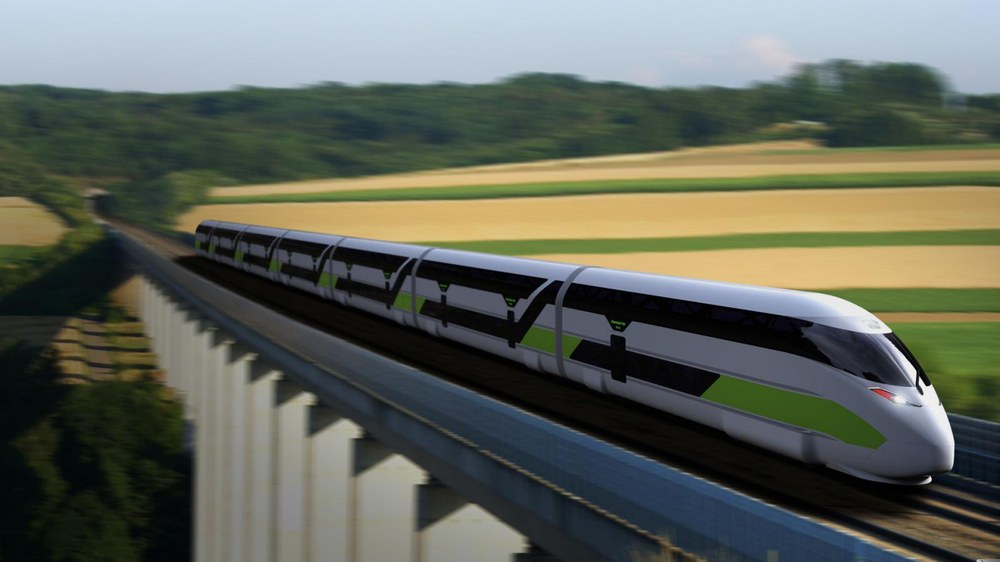Based on this, an operating concept was developed consisting of high-speed main lines on which the NGT HST high-speed railcar train runs at timetable speeds of up to 400 km/h and an intercity railcar train (NGT LINK), which travels at speeds of up to 230 km/h and carries passengers from the surrounding areas.
NGT LINK multiple-unit train concept

The NGT LINK is a seven-car, double-decker interregional feeder train that connects smaller cities with each other and with the major conurbations. With its hybrid drive, the NGT LINK can run on routes with inductive energy transmission and on conventionally electrified routes, as well as on partially electrified routes thanks to additional batteries. The NGT LINK achieves the objectives of the NGT project through a combination of lightweight construction, an innovative drive concept and a time- and energy-efficient operating strategy. Various measures reduce the energy required per seat by more than 50 percent compared to the single-decker ICE TD reference vehicle, while the train's passenger flow-optimized concept ensures short stops and therefore shorter journey times.

The double-decker lightweight coach bodies of the NGT LINK are designed in a power flow-optimized aluminium construction, which enables considerable mass savings through functional integration as well as lightweight design and materials. While the ICE TD weighs 216 tons, the 13-metre longer NGT LINK has a mass of 215 tons and offers 143 percent more seats (475 seats instead of 196).

The innovative mechatronic running gear concept offers advantages in terms of installation space and driving dynamics compared to conventional running gears. As each wheel is driven individually, there is no need for a wheelset shaft between the wheels. Similar to the NGT HST, this enables stepless passage on both levels, making the NGT LINK a genuine double-decker train. In addition, the use of a distributed drive enables generative braking on all wheels, which promises high energy savings for a train with short distances between stops.
The NGT LINK concept shows how trains of the future can be designed in order to derive a competitive, ecological and economical means of transportation that offers both efficiency and comfort.


